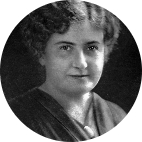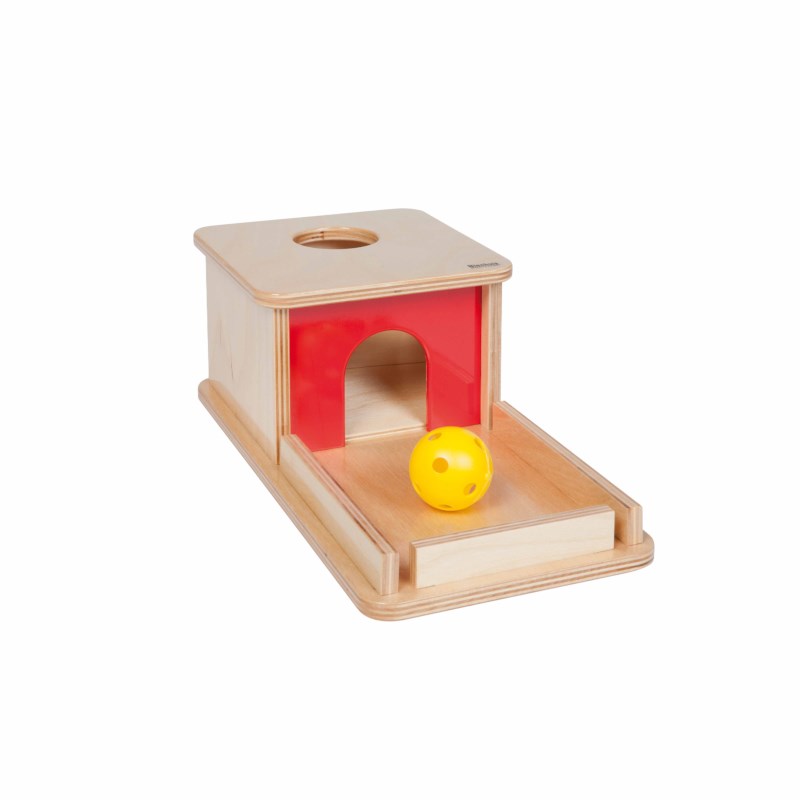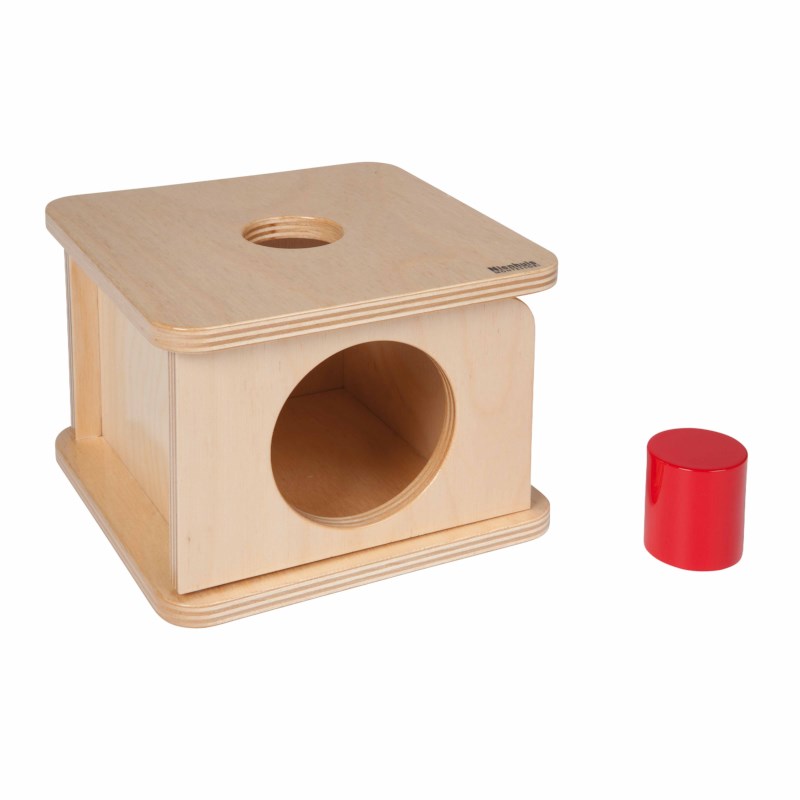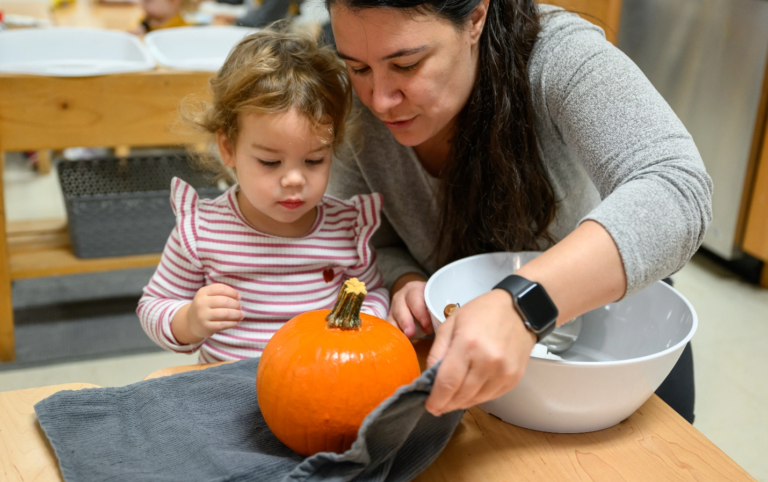
Montessori for Infants & Toddlers
Dr. Maria Montessori, the Italian educator and scientist who, more than 100 years ago, developed the system of education that bears her name, knew that during the period from birth to age 3, your child’s brain develops more rapidly than at any other time, and more learning takes place than at any other stage of development. Yet many parents don’t seek out formal education until their children have passed the toddler age.
Recognizing the importance of these formative years, the Montessori approach to infant and toddlers supports starting earlier than that.
In a Montessori environment, your infant or toddler will be with teachers—loving, nurturing, and rigorously trained in child development—who create peaceful, supportive, and safe environments for our youngest children. In these spaces, a child’s natural passion for wonder, curiosity, exploration, independence, and discovery comes alive.
Beginning with Montessori
Montessori Infant & Toddler programs offer so much more than childcare. The classroom design fosters your young child’s emerging independence and desire for exploration. The environments are designed to promote your child’s growth in all areas of development. Additionally, Montessori Infant & Toddler programs provide support and guidance for families through programs that may include parent education and parent/child group experiences.
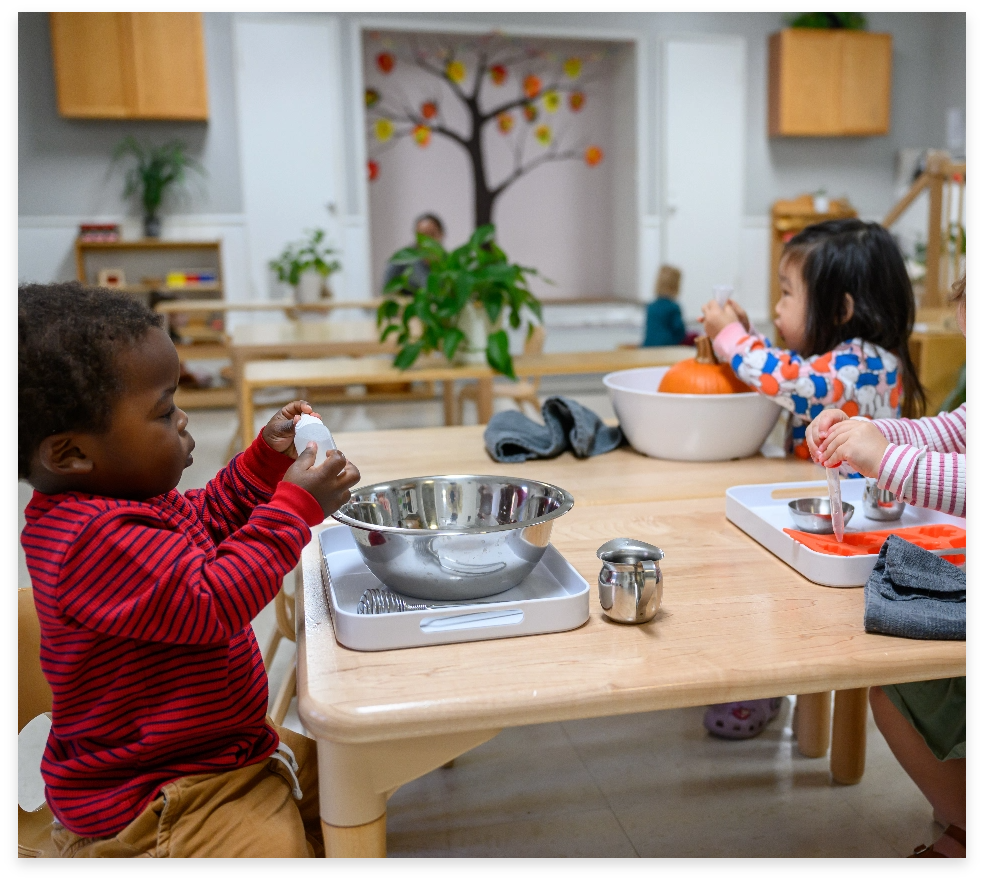
What Your Child Will Learn
During the first 3 years of life, your child develops more rapidly than at any other time. During this phase, your child absorbs large amounts of information from the environment through observation and experiences. These are the years that lay the foundation for later learning – and the stronger the foundation, the more the child will be able to build upon it.
Montessori Infant & Toddler programs offer a curriculum that emerges from each child’s unique skills and interests. Based on daily observations, teachers introduce new materials and activities that pique curiosity and stimulate learning. Learning objectives for your child at this age include developing skills such as language, concentration, problem solving, visual discrimination, and physical coordination.
The routines of everyday living are the foundation of Montessori Infant & Toddler programs. Activities promote independence, order, coordination, and concentration, as well as support social, emotional, physical, and cognitive development. These learning activities include:
Social skills: developing manners through interactions with peers, teachers, and adult-led small group games
- Self-care: washing, dressing, toileting, and eating, according to each child’s individual capacity
- Care of the environment: cleaning, food preparation and food service; plant care and animal care
- Large-motor activities (indoors and out): walking, climbing, running, jumping, balancing, climbing steps, and more
- Fine-motor skills: reaching, grasping, picking up objects, transferring objects, using tools and utensils, doing art work
- Language: naming objects, describing actions and intentions, discussing pictures, conversation, music, and singing
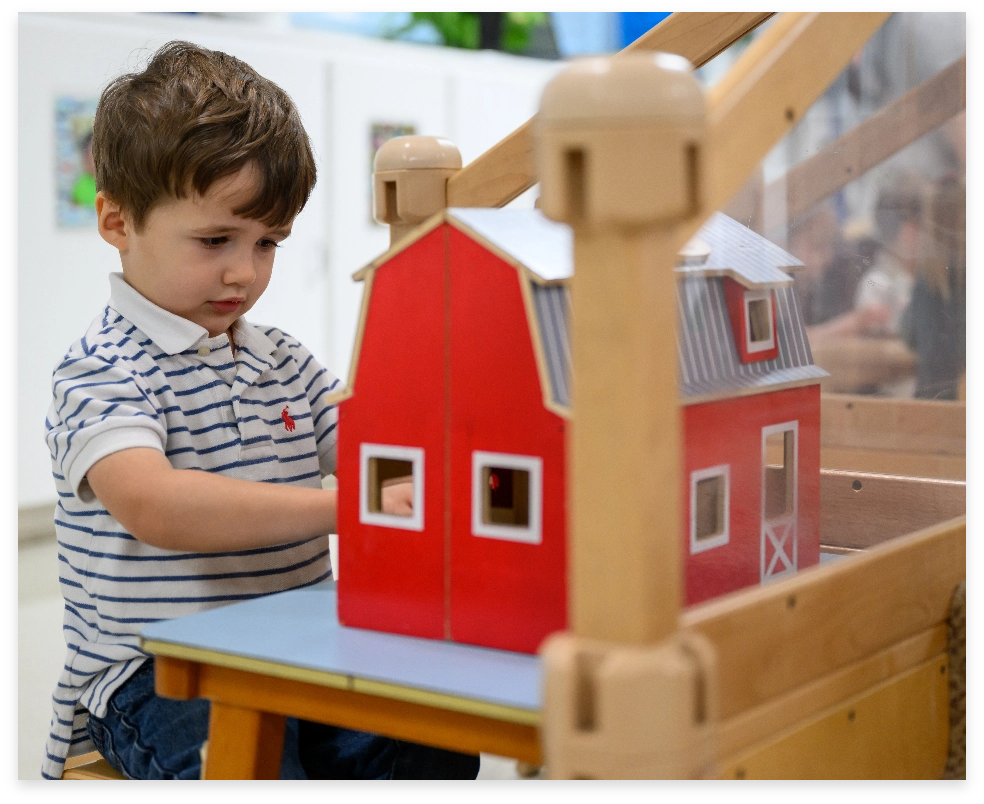
Montessori Learning Materials
While Dr. Maria Montessori did not develop learning materials for infants and toddlers, some have subsequently been designed in the spirit of her work. The materials go far beyond plastic squeak toys for chewing on and plastic blocks for banging together. Rather, they offer authentic and meaningful learning experiences.
The Curriculum
Montessori Infant & Toddler Programs may include:
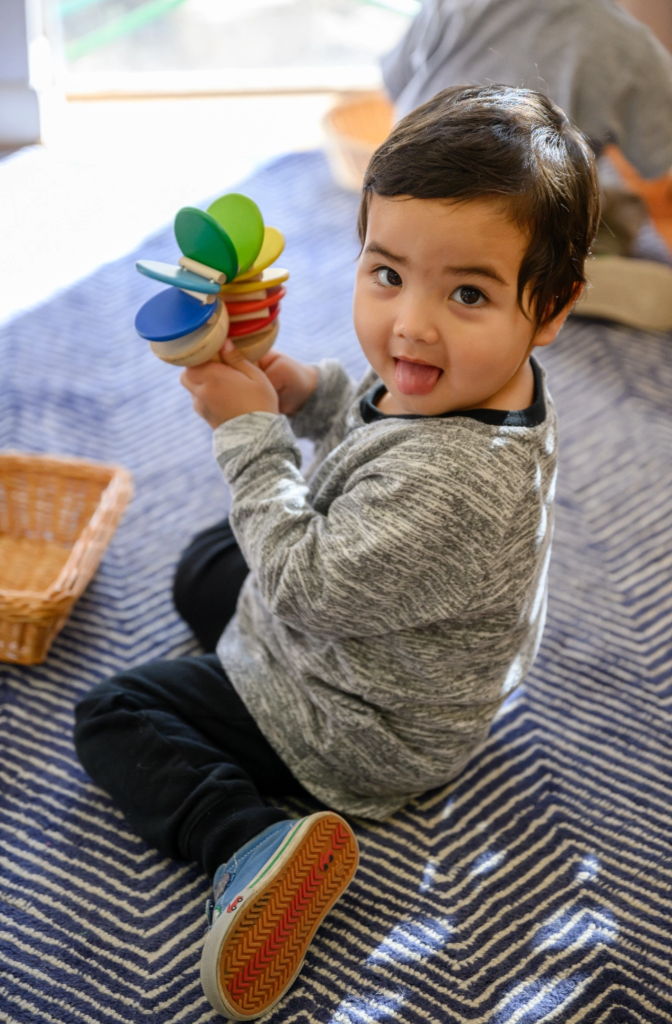
An Infant Class
(birth – 8 months)
A Montessori classroom for infants, sometimes referred to a “The Nido” Italian for “nest”), accommodates non-mobile or crawling infants in a peaceful classroom environment. Here, the infant safely explores, feeling secure in the presence of loving adult caregivers. The environment includes developmentally appropriate furniture and materials. Safety is paramount, but equipment that limits a child’s freedom of movement is avoided. Instead, specially designed furniture supports your child’s budding independence, including bars for pulling up, mirrors to reflect body movement, and a sleeping area with individual floor beds/mats, and child-sized tables and chairs rather than high chairs.
A Toddler Class
(18 months – age 3)
A Montessori classroom for toddlers safely supports your child’s drive to do things alone, developing confidence and a sense of competence. The environment is language-rich, with adults using proper nomenclature rather than baby talk so that the children are exposed to and develop a broad vocabulary. Adults also support toddlers in communicating with each other. A range of books allows children to explore on their own or read aloud with an adult.
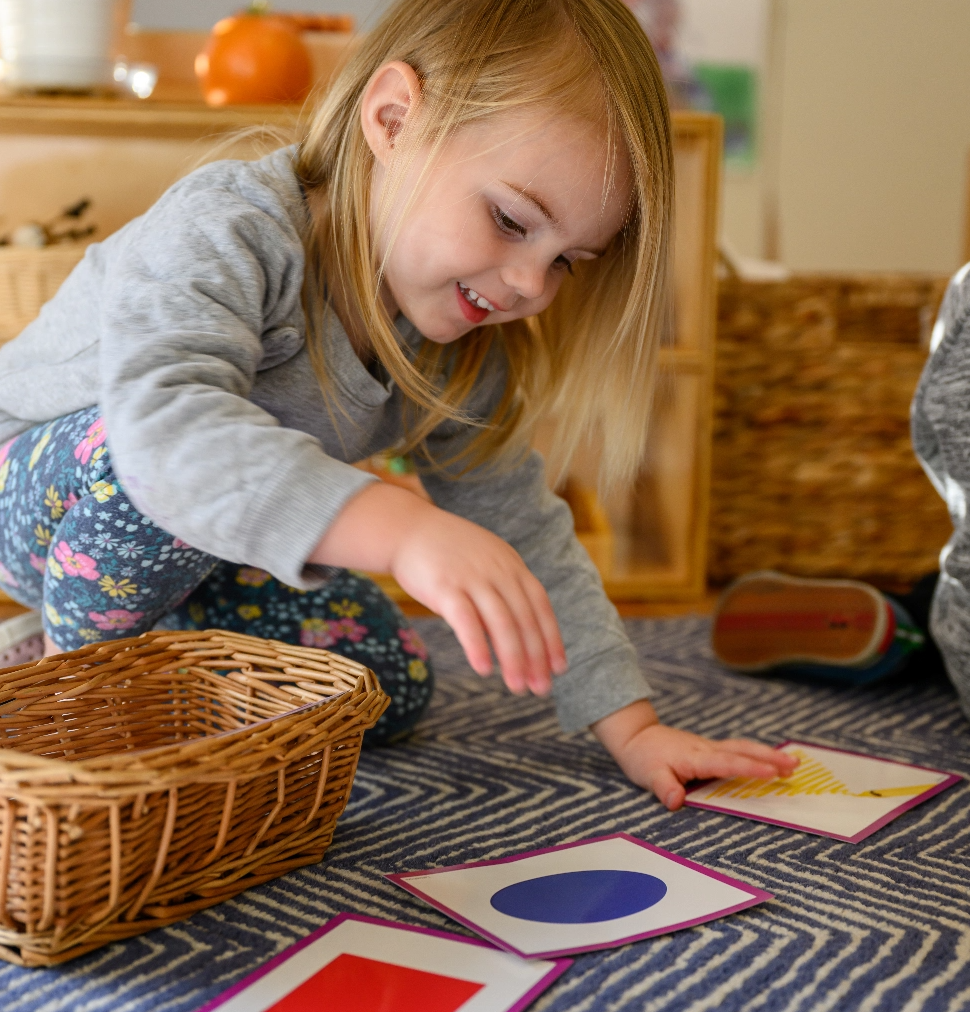
In this learning environment, children work independently, observe others, explore freely, and express their curiosity and creativity. A self-care area fosters toilet awareness and independence in maintaining personal hygiene (such as learning how to wipe one’s nose and wash hands independently). A sleeping area with individual floor beds/mats that allows toddlers to exercise autonomy in preparing for rest and allows them to get up independently once rested. There is also an area for gross motor activities to help children coordinate their movements, and low tables that enable them to help prepare, serve, eat, and clean up their snacks and meals.
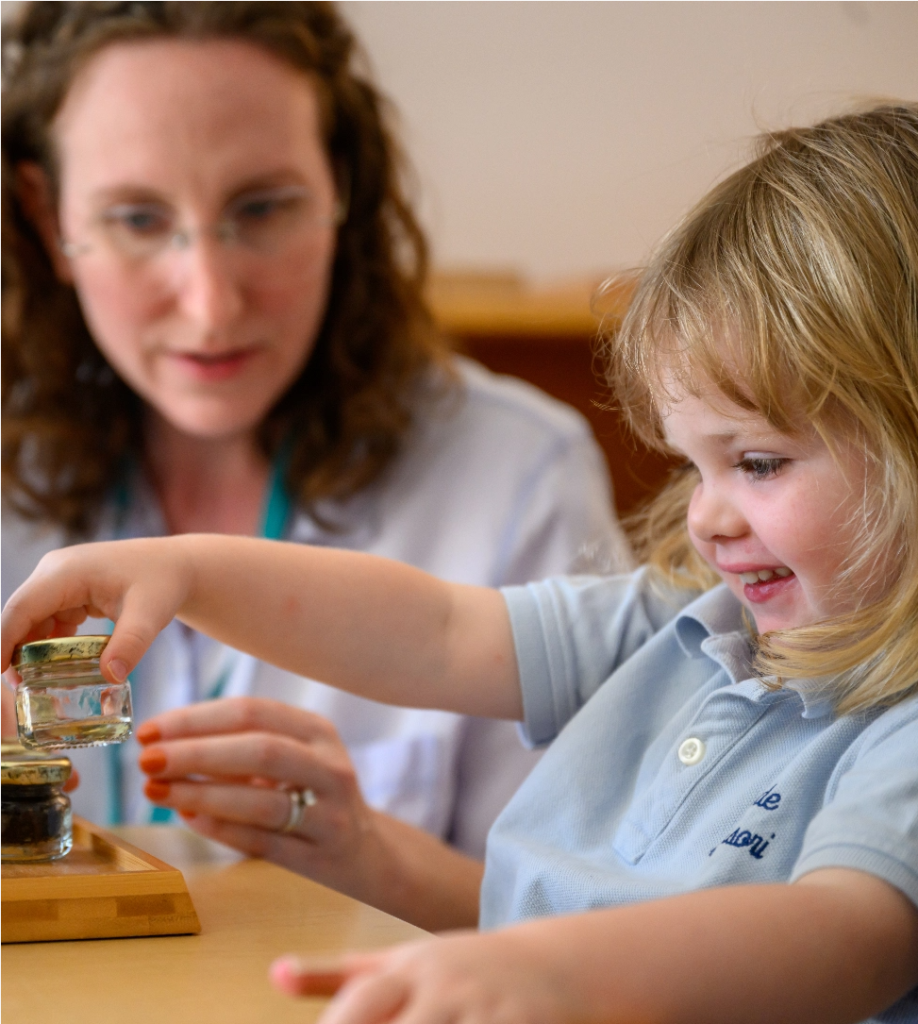
A Parent-Child Class
In a Montessori Parent-Child Class, you and your child will interact alongside a Montessori-trained teacher in a thoughtfully prepared environment. These activities will support your child’s sense of discovery and encourage independent investigation of the learning environment. In the class, you and your child will experience an environment set up to encourage movement, language, and learning through hands-on activities – all of which you can then apply at home.
The Montessori Classroom Environment for Infants & Toddlers
A Montessori environment for very young children gives your infant or toddler the freedom to safely explore and learn through discovery. The setting is calm, inviting, and homelike, with soft rugs, a rocking chair, books arrayed on low shelves and toys in baskets. Colors are muted, the atmosphere peaceful. The space is organized, clean, and uncluttered.
The classroom is a community in which respect for the independence and character of your child is paramount. Caregivers are consistently calm, gentle, soft-spoken, patient, and trusting. They demonstrate respect and compassion by using eye contact, kneeling to the level of the child, addressing your children by name, and speaking before touching or moving them. The result is a calm, soothing atmosphere in which consistent caregivers create an emotional safe haven for those in their care.
Learning materials, such as the ones in the photos on this page, are easily accessible. These materials are designed to foster concentration, problem solving, and a sense of achievement. Children select the material that interests them, use it for as long as they would like, clean it up (with assistance when needed), and make another choice.
Equipment that supports gross and fine motor skills, such as low ladders with railings for children who are just learning to walk, are available for toddlers to try. Child-sized furniture, utensils, and other tools enable children to make independent choices and complete activities, which builds self-confidence, concentration, and critical thinking skills.
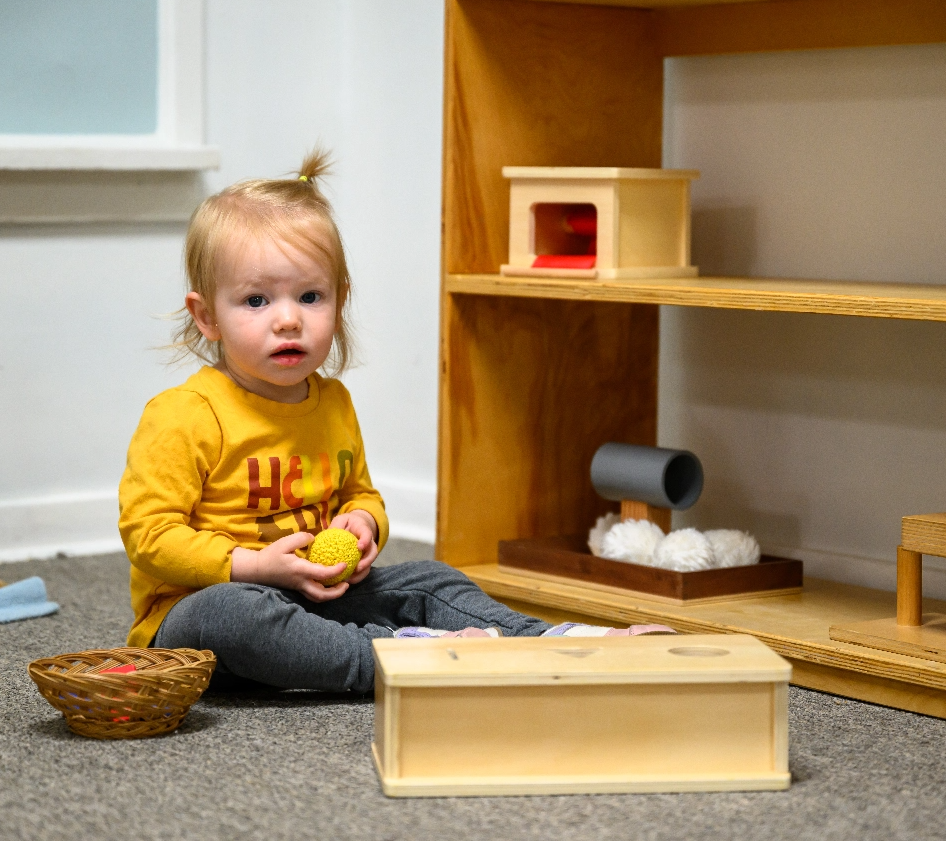
Please Visit
Montessori Infant & Toddler programs lay the foundation for lifelong learning by nurturing your child’s curiosity, self-confidence, and intrinsic desire to learn from birth. A Montessori environment offers so much more than childcare for the youngest learner – visit a Montessori classroom and see for yourself.
Connect with us.
@americanmontessori
